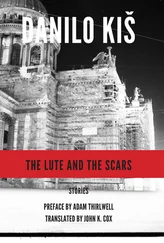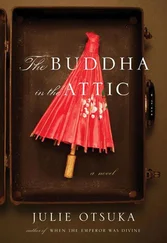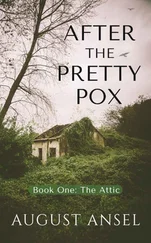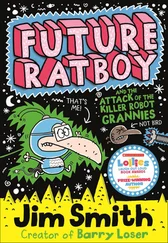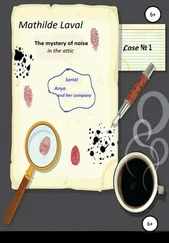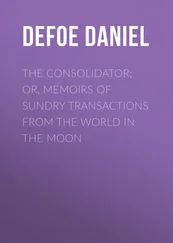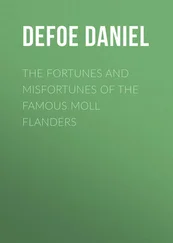Danilo Kiš - The Attic
Здесь есть возможность читать онлайн «Danilo Kiš - The Attic» весь текст электронной книги совершенно бесплатно (целиком полную версию без сокращений). В некоторых случаях можно слушать аудио, скачать через торрент в формате fb2 и присутствует краткое содержание. Год выпуска: 2012, Издательство: Dalkey Archive Press, Жанр: Современная проза, на английском языке. Описание произведения, (предисловие) а так же отзывы посетителей доступны на портале библиотеки ЛибКат.
- Название:The Attic
- Автор:
- Издательство:Dalkey Archive Press
- Жанр:
- Год:2012
- ISBN:нет данных
- Рейтинг книги:4 / 5. Голосов: 1
-
Избранное:Добавить в избранное
- Отзывы:
-
Ваша оценка:
- 80
- 1
- 2
- 3
- 4
- 5
The Attic: краткое содержание, описание и аннотация
Предлагаем к чтению аннотацию, описание, краткое содержание или предисловие (зависит от того, что написал сам автор книги «The Attic»). Если вы не нашли необходимую информацию о книге — напишите в комментариях, мы постараемся отыскать её.
Bildungsroman
The Attic — читать онлайн бесплатно полную книгу (весь текст) целиком
Ниже представлен текст книги, разбитый по страницам. Система сохранения места последней прочитанной страницы, позволяет с удобством читать онлайн бесплатно книгу «The Attic», без необходимости каждый раз заново искать на чём Вы остановились. Поставьте закладку, и сможете в любой момент перейти на страницу, на которой закончили чтение.
Интервал:
Закладка:
Danilo Kiš
The Attic
TRANSLATOR’S INTRODUCTION
Danilo Kiš was born on February 22, 1935 in the northern Serbian city of Subotica. This city, known in Hungarian as Szabadka, has long been a crossroads of cultures; it lies in the northern part of the region known as Vojvodina, on the great plains that characterize central Hungary and lap over into eastern Croatia and western Transylvania as well. It has been a polyglot border town since the end of the Habsburg Empire in 1918. In Subotica and throughout the Vojvodina one would have noted in the interwar period the presence of Slovak, Ruthenian, German, Jewish, and Croatian minorities as well as the larger Hungarian and Serbian populations. This region, arguably the most diverse in all of the former Yugoslavia, was also home to two small, little-known population groups: the Šokci and the more numerous Bunjevci, who are Roman Catholic by tradition and are generally held, on the basis of their dialects, to be Slavic (possibly Croatian) settlers from points south and east.
Kiš’s father was named Eduard Kiš, a Hungarian Jew who worked for the Yugoslav railway company. Kiš’s mother, born Milica Dragićević, was a Montenegrin Serb by nationality and an Orthodox Christian by religious affiliation. Eduard died in the Holocaust in 1944. Kiš and his mother and sister spent the war in Hungary, returning to Montenegro in Titoist Yugoslavia in 1947. Kiš went to school in Cetinje and university in Belgrade. He taught at several universities in France in the 1960s and 1970s. After defending his works and his approach to the art of writing in several rounds of literary and political polemics within Yugoslavia, he took up more or less permanent residence in France in the 1980s. He won several significant literary awards during his life, and passed away on October 15, 1989. He is buried in Belgrade.
Yugoslavia’s lifespan in the twentieth century encompassed all the major developments in European history from the end of World War I to the end of the Cold War and the fall of the Berlin Wall. The country existed as a (variously defined) union of six constituent republics from 1918 to 1991, and Kiš’s life fell squarely into the heart of this time period. Royal Yugoslavia had a troubled existence before the Second World War, and the wartime experiences of Kiš’s family personally, as well as his country as a whole — foreign occupation, the Holocaust, a brutal civil war — represented a sharp escalation of those troubles. The second, or socialist, Yugoslavia also began with a time of considerable pain and violence, as the communist leader Josip Broz Tito settled accounts with ideological foes and potential oppositionists through massacres, purges, and stifling cultural and political policies.
By the mid-1950s, however, Yugoslavia had evolved to a new stage, and it was in a much different cultural milieu that Kiš started his literary career. Belgrade had always been the metropole of South Slavic culture; one can assert this without disparaging the significant cultural achievements of other cities in the region, such as Zagreb, Sarajevo, and Ljubljana, which lacked Belgrade’s broad-shouldered bluster and the intellectual autonomy that came with political independence. Belgrade was first the capital of the independent state of Serbia and then of both Yugoslavias.
Belgrade was recovering from the various atrocities visited upon it first by Nazi and then communist rule by the time Kiš wrote his first novel, Mansarda (which, translated here as The Attic , might also be titled The Garret or The Loft in English). And, at least as importantly, Yugoslavia too was recovering. After Tito’s epoch-making split with Stalin in 1948, Yugoslavia developed its own “third path” of maverick socialism that soon left the arts a considerable amount of room to maneuver. By 1960, the hidebound dictates of socialist realism were largely dead; artistic controversies did still crop up, often fueled by inter-republican rivalry and sometimes by the lingering taboo on criticism of Marshal Tito and the reputation of his anti-Nazi guerrilla forces, the Partisans, but Kiš was basically free to experiment with pan-European trends, taking his place beside older and internationally recognized Serbian writers, such as Ivo Andrić, the 1961 Nobel laureate in literature, as well as the important voices from his own generation, such as Antonije Isaković and Borislav Pekić.
READING THE ATTIC
The Attic is the delightful story of a Belgrade bohemian nicknamed Orpheus. He is a writer and a lute player, a skirt-chaser and a philosopher, a dreamer and — probably — a perpetual student. The novel is set, rather vaguely, in the capital and coastal regions of Yugoslavia in the 1950s. As he is wrestling with his feelings for a young woman he calls Eurydice, Orpheus is also wrestling with his calling as an artist. Towering over Orpheus’s actual comings and goings and his not inconsiderable flights of fancy are the colossal, perpetual, neon-lit questions about ART: What is its relation to reality, and how should a person’s commitment to it affect his or her personal life?
Like Kiš’s other prose works, The Attic is not complex in syntax or diction. But it does contain more humor than his other novels — humor that reminds one of his (as yet untranslated) short stories such as “An American Tale” or essays such as “Shakespeare and Sausages.” We come across a skeptical goldsmith in Chapter One, a lewd but erudite blotch of mold on the ceiling in Chapter Two, a riff on the perils of amateur translation in Chapter Three, an unusual payment in kind for English lessons proffered to the “sluts of the port” in Chapter Six, and so on. Indeed the entire book is shot through with wordplay manifested in nicknames and permutations on designations for food and drink and other consumer products. There are brief but bracing love scenes, the light decadence of barroom shenanigans, an encounter with a prostitute, and a lot of trading in stock literary and pop-culture references. Underscoring the youthful feel of the work — youthful for the protagonist as well as his real-life author — are the compendia of “big questions” and food for thought in the first two chapters. These are the issues, indeed, that teenagers and twenty-somethings in all cultures have to spend their time sorting out and, one hopes, answering.
Orpheus lives in an attic with Billy Wiseass (real name: Igor) in a large apartment building in Belgrade. The two young men philosophize and read and party and decorate their apartment in in the way of young, irrepressible intellectuals and city-dwellers. They are, in fact, coming to terms with “the meaning of life” and awakening (in the manner of one of those coming-of-age novels that literary critics call a Bildungsroman ) to life’s possibilities and limitations and costs. Orpheus meets a young woman he really likes. He then takes off on an imaginary (or real?) trip to the South Seas where he gains new perspectives on courtship and European identity. He senses that he is walled in by his own egocentric perspectives and that writing about other people might prove to be his liberation. But he has a long row to hoe.
By Chapter Four, Orpheus is back in Belgrade, where we are treated to a dose of postmodernist discourse from the cleaning lady, who has fallen in thrall to Billy. But so has another, younger woman, whose accidental pregnancy serves to illustrate another strange dilemma of the postmodern writer. Kiš, it seems, just can’t leave the controls of meta-narration alone, for we then go skimming along a lengthy pastiche of Thomas Mann’s The Magic Mountain . Orpheus continues to be plagued by a real tension between art and love and also by a glaring inability to nail down his actual or proper role in managing either.
Читать дальшеИнтервал:
Закладка:
Похожие книги на «The Attic»
Представляем Вашему вниманию похожие книги на «The Attic» списком для выбора. Мы отобрали схожую по названию и смыслу литературу в надежде предоставить читателям больше вариантов отыскать новые, интересные, ещё непрочитанные произведения.
Обсуждение, отзывы о книге «The Attic» и просто собственные мнения читателей. Оставьте ваши комментарии, напишите, что Вы думаете о произведении, его смысле или главных героях. Укажите что конкретно понравилось, а что нет, и почему Вы так считаете.

